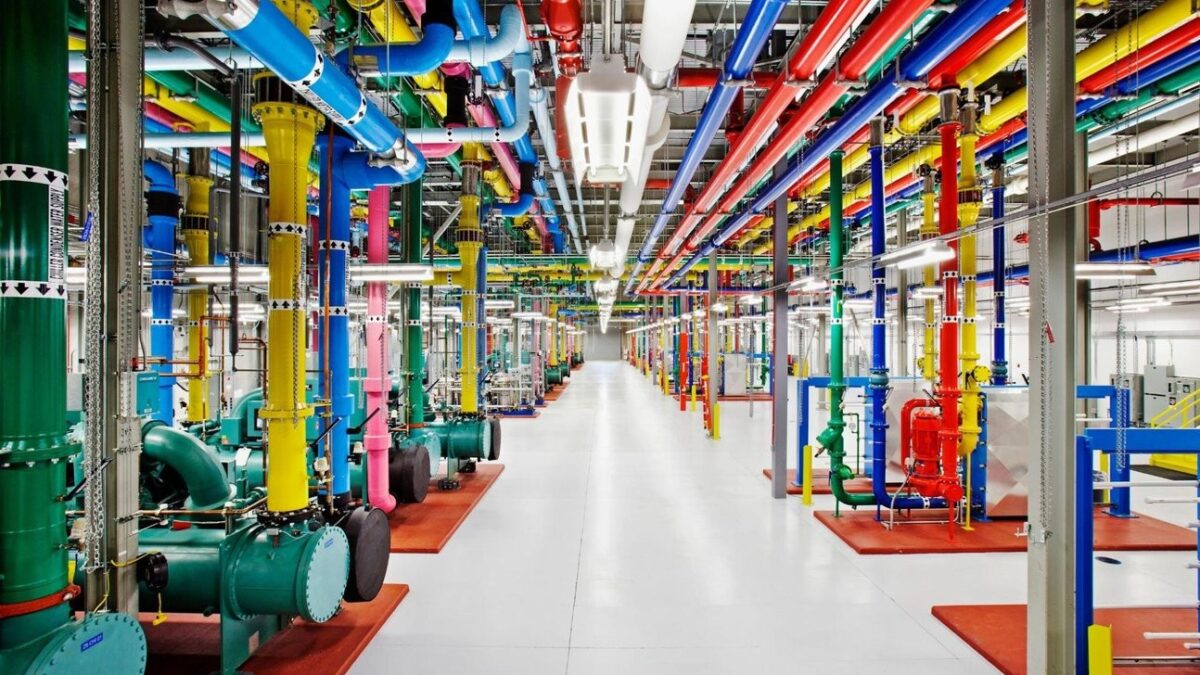Google Slashes Data Center Energy Emissions Despite AI Power Surge
Google cuts data center emissions as AI energy demands grow, driven by clean power and efficiency breakthroughs.
Google announced on Friday that it has reduced data center emissions by 12 percent year-over-year, despite increasing energy demands from artificial intelligence, a milestone outlined in its 10th annual Environmental Report.
The company stated that the achievement demonstrates that the growth of clean energy and AI can go hand in hand. Still, it warned of persistent global challenges in decarbonizing supply chains and energy infrastructure.
Clean Energy Projects Offset AI Power Demands
The emissions reduction occurred even as electricity usage at Google’s data centers increased by 27 percent in 2024, driven by growing AI workloads.
The company credited a series of long-term clean energy contracts, totaling 2.5 gigawatts, that came online last year. These investments raised Google’s carbon-free energy use from 64 percent to 66 percent on an hourly basis — the highest it has achieved to date.
“Powering AI with cleaner energy is not just possible — we’re doing it,” said Kate Brandt, Google’s chief sustainability officer. “But scaling responsibly means solving for both supply and efficiency.”
In 2024, Google also announced its largest-ever clean energy procurement, adding another 8 GW of capacity to its portfolio — more than any single year in its history.
Industry-Leading Efficiency in AI and Infrastructure
Google emphasized its efforts to optimize data center performance and the efficiency of its AI models. The company said its facilities now operate with 84 percent less overhead energy than the industry average.
Innovations such as quantization techniques have improved large language model training efficiency by 39 percent. At the same time, its latest tensor processing unit, Ironwood, uses 30 times less energy than the first-generation TPU launched in 2018.
These gains, Google said, are crucial as it continues to expand AI services while attempting to reduce environmental impacts.
AI Tools Deliver Emissions Cuts, Disaster Readiness
Beyond its own footprint, Google highlighted how AI-powered products are helping others cut emissions.
Tools like Nest thermostats and fuel-efficient routing in Google Maps helped avoid an estimated 26 million metric tons of carbon dioxide equivalent emissions in 2024, comparable to taking over 3.5 million U.S. homes off the grid for a year.
The company is also deploying AI in disaster preparedness. Its FireSat wildfire detection tool and Flood Hub platform for flood prediction are helping communities respond more rapidly to climate-related risks.
Scope 3 Emissions Pose Growing Challenge
Despite progress in direct operations, Google acknowledged a key setback: total emissions across its value chain rose by 11 percent year-on-year. The increase was attributed primarily to supply chain growth and regional limitations in clean energy infrastructure, particularly in parts of the Asia Pacific.
“Progress is uneven. In many parts of the world, the clean energy we need still isn’t available,” Brandt said.
Google said it is working with partners to accelerate the development and adoption of emerging energy technologies, including enhanced geothermal and advanced nuclear.
Climate Moonshots Meet Real-World Limits
While Google reaffirmed its “moonshot” goal of operating entirely on carbon-free energy by 2030, it acknowledged that the scale and pace of the transition remain formidable.
The company stressed the need for broader systemic change — in infrastructure, policy, and industry collaboration — to decarbonize operations globally.
“We’ve learned a lot about what’s truly possible — and where the toughest challenges still lie,” Brandt said. “We’re committed to using our technology, resources, and partnerships to make the biggest impact.”
Nirmal Menon
Related posts

Subscribe
Error: Contact form not found.


